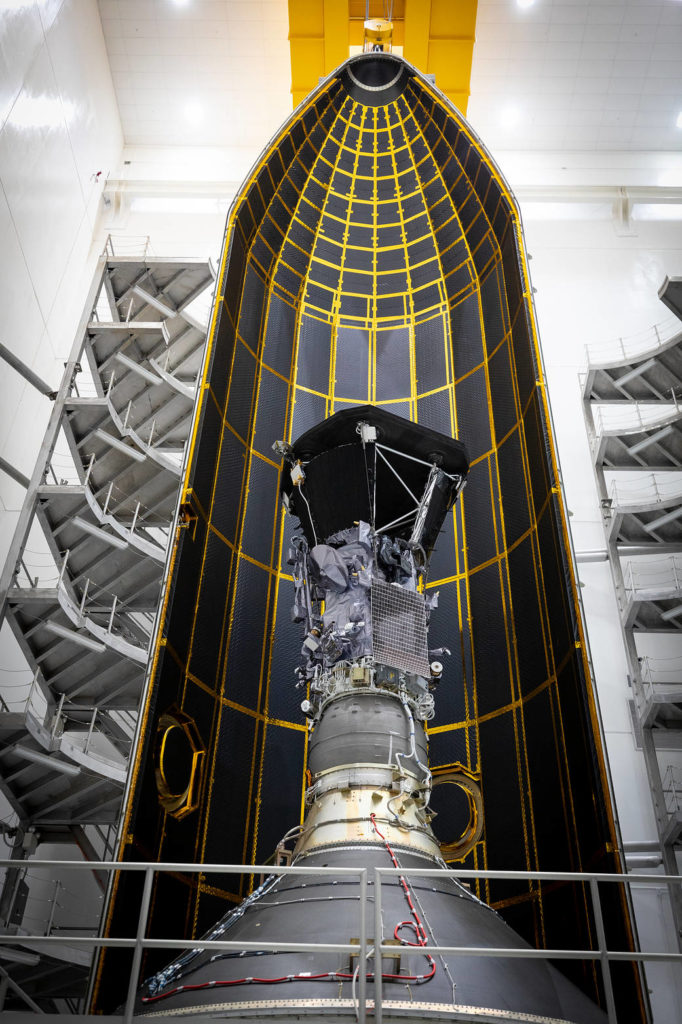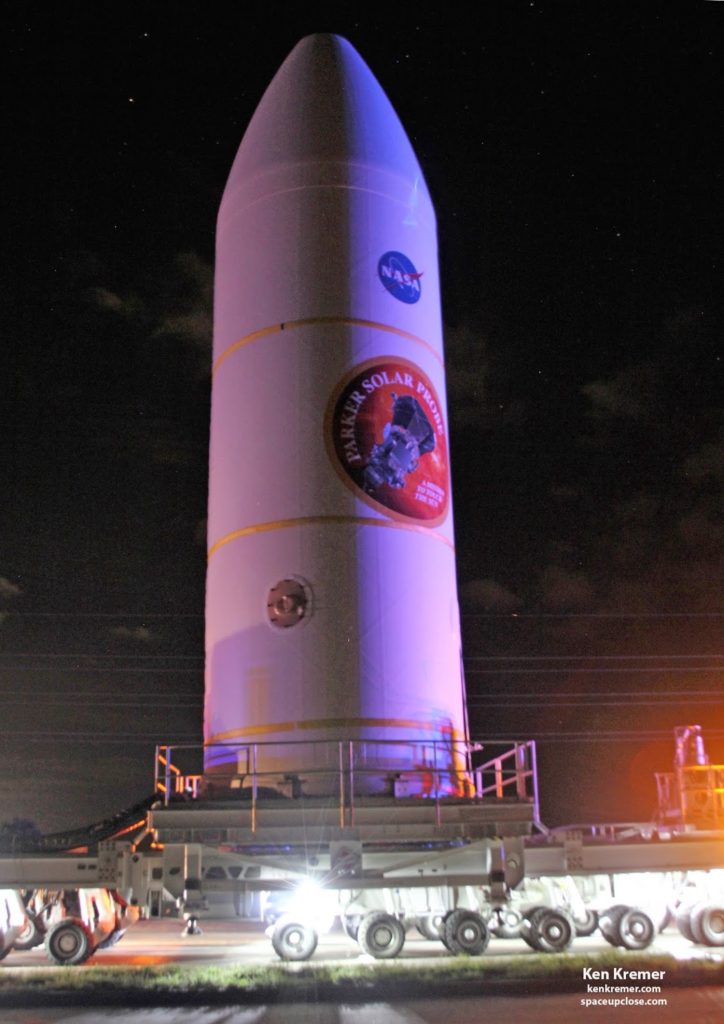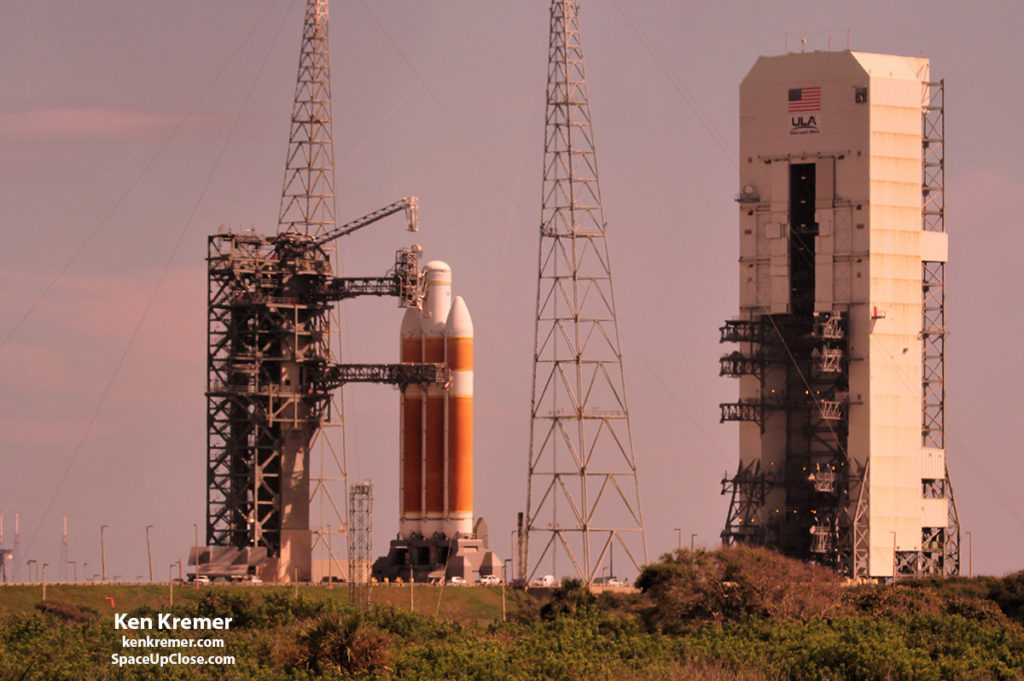Ken Kremer — SpaceUpClose.com — 10 August 2018
towards a spectacular blastoff in the wee hours of Saturday early morning August
11.
along or not, the launch time has shifted slightly earlier.
of a launch window
that starts at 3:33 a.m. EDT (0748 GMT) and lasts for 65 minutes until 4:38 a.m. EDT (0833
GMT).
will fly far closer to the Sun than any prior spacecraft – some ten times
closer in fact.
to fly through the sun’s outer
atmosphere — the solar corona – skimming within
4 million miles, 8.86 solar
radii (6.2 million kilometers) of the suns fiercely hot surface where it
will encounter brutally hot conditions reaching into the millions of degrees
and extremely intense and deadly radiation.
of Space UpClose eyewitness rollout photos taken last week and others from pad
37 as the rocket was undergoing wet dress rehearsal activities.
EDT Sat., Aug. 11
good with a 70 percent chance of acceptable conditions at launch time.
technical or weather, back uo launch opportunities exist on Monday and Tuesday.
The launch time shifts slightly each day.
launch is slated for Aug. 11, 2018 atop the triple barrel United Launch Alliance Delta
IV Heavy rocket, the most powerful vehicle in the firms fleet, from pad 37 on Cape Canaveral
has been delayed several times to deal with a variety of spacecraft technical
and payload processing issues from its originally planned July 31 liftoff date
and eaten into the 3 week launch period – that’s was just extended a few more
days!
August 13 to get the spacecraft off the ground. So its getting close to the end
of the launch period after which it will have to sit on Earth until the next
opportunity for liftoff in May 2019.
the white colored fairing consists of the Parker Solar Probe (PSP) integrated
on top of the third
stage rocket motor, a Star 48BV provided by Northrop Grumman, formerly Orbital
ATK.
tall and has a mass of 1,424-pounds (646-kilograms). It
was developed at a cost of $1.5 Billion.
operations, technicians lifted and mated PSP onto the Star 48BV rocket motor on July 11.
third stage Star 48 BV rocket motor was added as an essential element required
to get enough thrust for PSP to leave the influence of the Earth’s gravity
field and fly within very close proximity of the sun to carry out its mission
to ‘Touch the Sun’.
stack was then encapsulated inside the bisector fairing at Astrotech on July
16, 2018.
triple stick ULA Delta IV Heavy is the worlds largest operational launch
vehicle and United Launch Alliance (ULA) was selected by NASA as the launch
provider several years ago.
use a third stage rocket to gain the speed needed to reach the Sun, which takes
55 times more energy than reaching Mars,” says NASA.
PSP convoy reached pad 37 after midnight Tuesday morning, July 31.
next step was to mount the satellite stack on top of the Delta IV Heavy rocket
inside the Mobile Service Tower (MST) to carry out the science
mission.
then quickly got to work and hoisted the PSP payload stack and integrated it on
top of the already waiting two-stage
approximately 179 foot tall (55 meter tall) Delta IV Heavy stack comprising two stages.
multiple vantage points in the Florida Space Coast region.
two stage Delta IV Heavy stack had already completed a pair of critical Wet
Dress Rehearsal (WDR) exercises conducted by engineers and technicians on July 2 and July 6 to ensure that the rocket
will be ready for the blastoff now currently targeted for August 11 – as I
reported here earlier.
out our exclusive Space UpClose photos of the two stage Delta IV Heavy stack on
the pad after the WDRs were successfully concluded.
the fairing and is on top of the Delta IV Heavy as of 12 Noon today,” said
Nicky Fox, Parker Solar Probe’s project scientist at the Johns Hopkins
University Applied Physics Laboratory, which developed the mission for NASA, at
a live media briefing held earlier at the University of Chicago.
Probe is go for the sun.”
answer fundamental questions about the nature of the sun and development an
understanding of how the sun works – such as why is the solar corona so hot.
Its much hotter than the suns surface.
the solar wind is accelerated to supersonic speeds.
Probe will fly ‘Where no Earth probe has gone before!’
Parker Solar Probe will swoop through the Sun’s atmosphere 24 times, getting closer
to our star than any spacecraft has gone before.”
sun’s outer atmosphere — the solar corona — to examine two fundamental
aspects of solar physics: why the corona is so much hotter than the sun’s
surface, and what accelerates the solar wind that affects Earth and our solar
system. Understanding these fundamental phenomena has been a top-priority
science goal for more than five decades. SPP will orbit the sun 24 times,
closing to within 3.9 million miles of its surface with the help of seven Venus
flybys,” says NASA.
services amounts to $389.1 million for a deal signed with the agency in
2015.
Heavy to launch the Orion EFT-1 test flight.
utilized to launch the heaviest clandestine payloads for national security
purposes for the USAF and NRO.
astrophysicist Eugene Parker, S. Chandrasekhar Distinguished Service Professor
Emeritus, Department of Astronomy and Astrophysics at the University of Chicago,
who predicted the existence of the solar wind in groundbreaking papers dating back
to the 1958s.
Dr. Gene Parker developed a theory showing how the Sun’s corona is so hot that
it overcomes the Sun’s gravity, forming the solar wind,” says NASA.
for a living individual.
has never explored before,” said Thomas Zurbuchen, the associate administrator
for the Science Mission Directorate at NASA Headquarters in Washington. “This
mission will answer questions scientists have sought to uncover for more than
six decades.”
Boeing, Lockheed Martin, Orbital ATK and more space and mission reports direct
from the Kennedy Space Center, Cape Canaveral Air Force Station, Florida and
Wallops Flight Facility, Virginia.
Stay tuned here for Ken’s continuing Earth and Planetary science and human
spaceflight news: www.kenkremer.com
–www.spaceupclose.com – twitter @ken_kremer – email: ken at kenkremer.com





